Fixing Leggy Kalanchoe Plants – Keep An Eye Out For These Warnings Signs
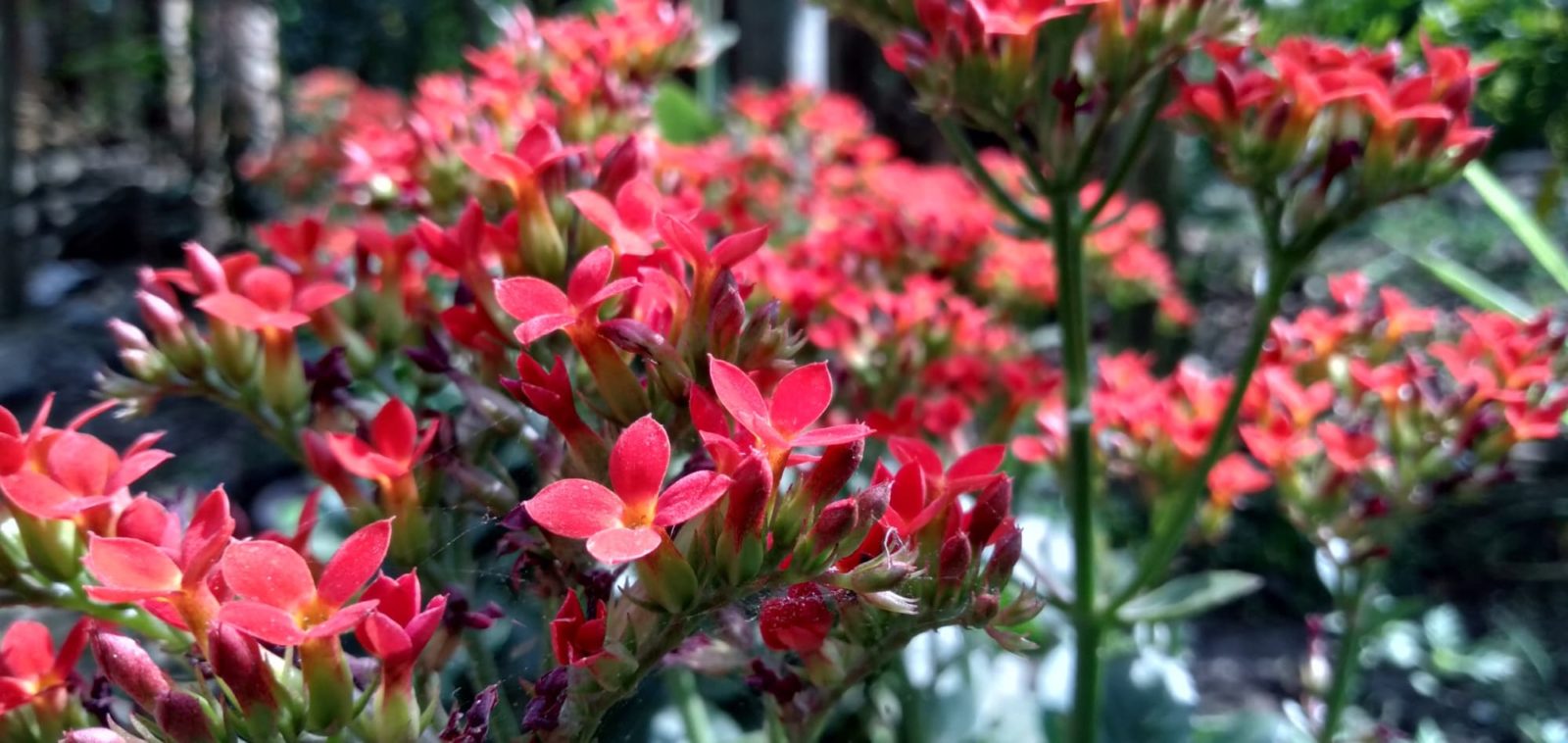
SUCCULENTS > KALANCHOE > LEGGINESS
Reviewed By PETER LICKORISH

Peter is a Horticulture Lecturer and self-employed Horticulturist, with a passion for diverse areas of the industry - from garden design to the science behind plant growth and propagation. He has completed the Royal Horticultural Society’s Master of Horticulture (MHort) Award and lectures on RHS courses at Bedford College.
IN THIS GUIDE
KALANCHOE GUIDES
Legginess
Where light is concerned, Kalanchoes can be quite fussy.
When it’s too bright, the plant can wilt or get leaf scorch, but when it’s too dark, that’s when the real trouble begins and the plants may become leggy.
Simply put, insufficient light causes a Kalanchoe to stretch toward the weak or transient light source and it does so by elongating its stems as the days pass.
Ergo, legginess.
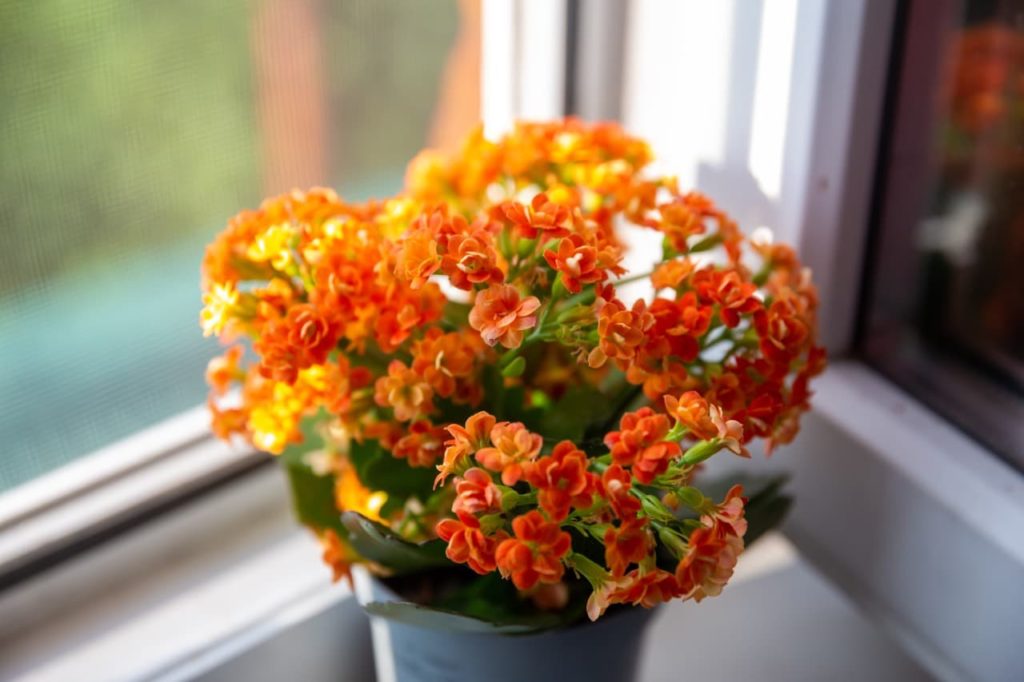
Be aware that even if a poorly-lit room is well-lit from a single strong source of light, such as a single window or single set of grow lights, a Kalanchoe’s growth may well be biased towards that light source.
Since Kalanchoes are usually treated as indoor plants, their light needs can go unmet.
So, let’s look into how you may be able to catch the onset of legginess before it really begins, and what to do about it if you’re a little too late.
About Kalanchoes
Kalanchoes are succulents with shimmering green leaves and an abundance of small, rigid, long-lasting flowers in bright pinks, oranges and reds.
The word Kalanchoe technically refers to a Botanical genus.1Petruzzello, M. (1999, May 4). Kalanchoe | Description, Major Species, & Facts. Encyclopedia Britannica. Retrieved March 29, 2023, from https://www.britannica.com/plant/kalanchoe
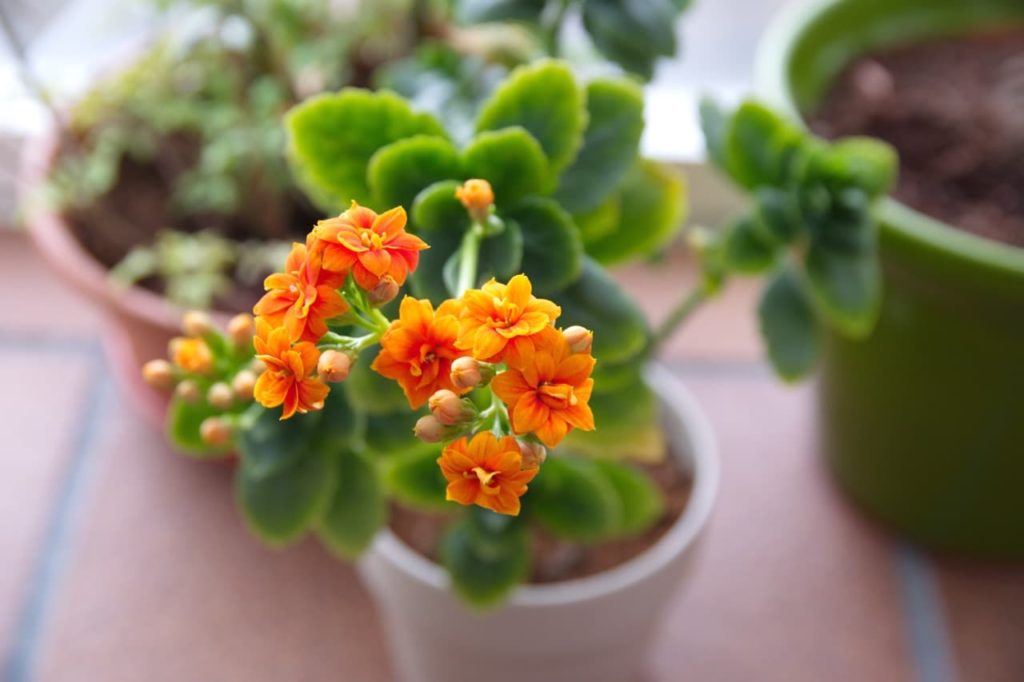
This genus includes many dozens of species but only a few of these are grown by gardeners, perhaps the most widely grown being K. blossfeldiana. These are informally subsumed within the same generic name – Kalanchoe.2Kalanchoe: An Overview. (n.d.). Science Direct; Elsevier BV. https://doi.org/10.1016/b978-0-12-437651-9.50022-1
Because these denizens of the tropics are not tolerant of the cold, they are commonly grown as houseplants in the UK, and, of course, that’s where the trouble begins – sub-optimal light.
Early Warning Signals
Before your Kalanchoe actually becomes a leggy, unsightly mess, it may well send out a few early warning signals, and these will occur most likely in the following order:
- Multiple growing tips will point towards the light source.
- The upper leaves will start to curl downward though note this can occur due to lack of water or sun-scorch too.
- The leaves will lose their rich green shade and adopt a sickly yellowish colour.
- Plant growth overall will become unbalanced, becoming biased toward the light source.
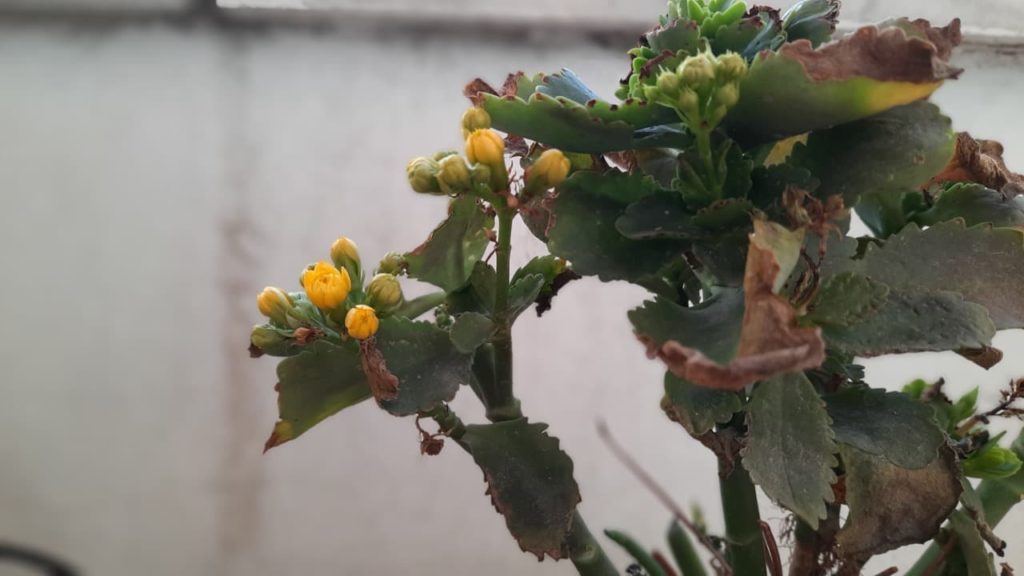
Keep an eye open for these signs so that you make that proverbial stitch in time.
How To Fix The Problem
What you need to do is to correctly trim the leggy plant and shift it to a spot where it gets the right kind of light and the right amount of light.
1) Trim Correctly
Sterilise a pair of secateurs to trim the plant.
Target those stems that are straggly, sagging or dangling off the rim of the pot.
These will have open stems between sets of leaves.
Trim off anything from one-third to two-thirds of the lengths of such stems, cutting to just above a pair of leaves which are near the centre of the plant.
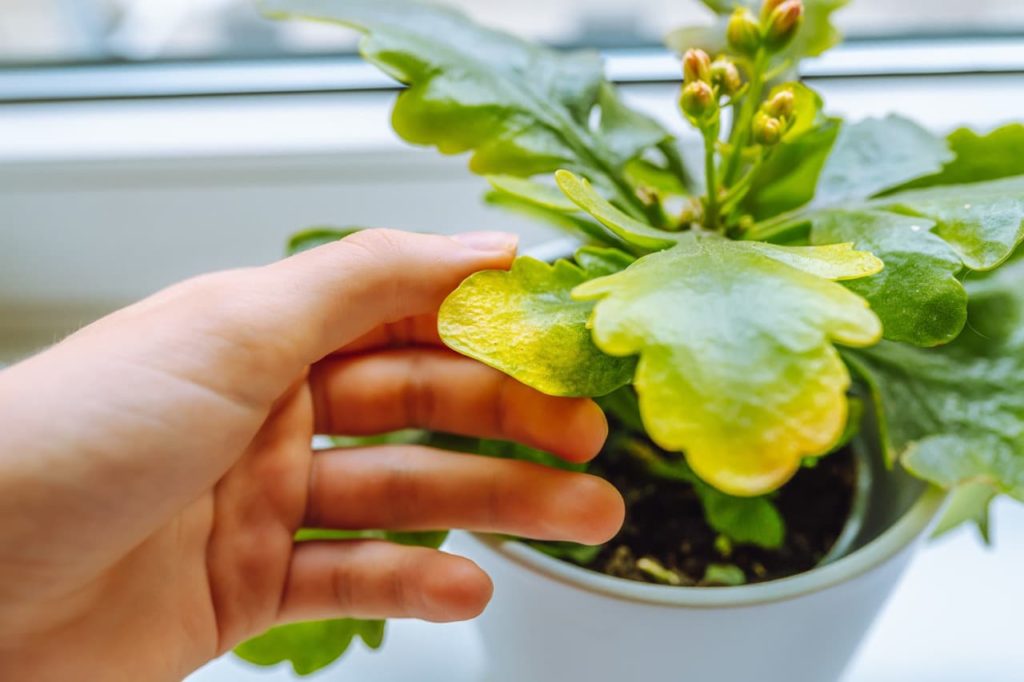
The section that is left behind should still have at least one set of leaves.
Do not discard the trimmings – Kalanchoes propagate easily from cuttings!
Those stems that are getting elongated but are not exactly leggy don’t need to be trimmed.
Simply pinch or cut off the tips to halt further elongation.
Kalanchoes can re-flower surprisingly soon after a trim.
2) Move The Plant
Put the trimmed Kalanchoe in a spot where it gets a little direct sunlight and plenty of indirect light from multiple sides.
A spot where the plant gets a few hours of morning sunlight in a spacious, well-lit room with multiple windows is ideal.
You can utilise gauze curtains (to diffuse harsh, direct sunlight) and reflective materials in your room, such as windowpanes and glass cabinets, to best position that struggling Kalanchoe.
Be careful not to reflect bright light back at a Kalanchoe or scorching will occur.
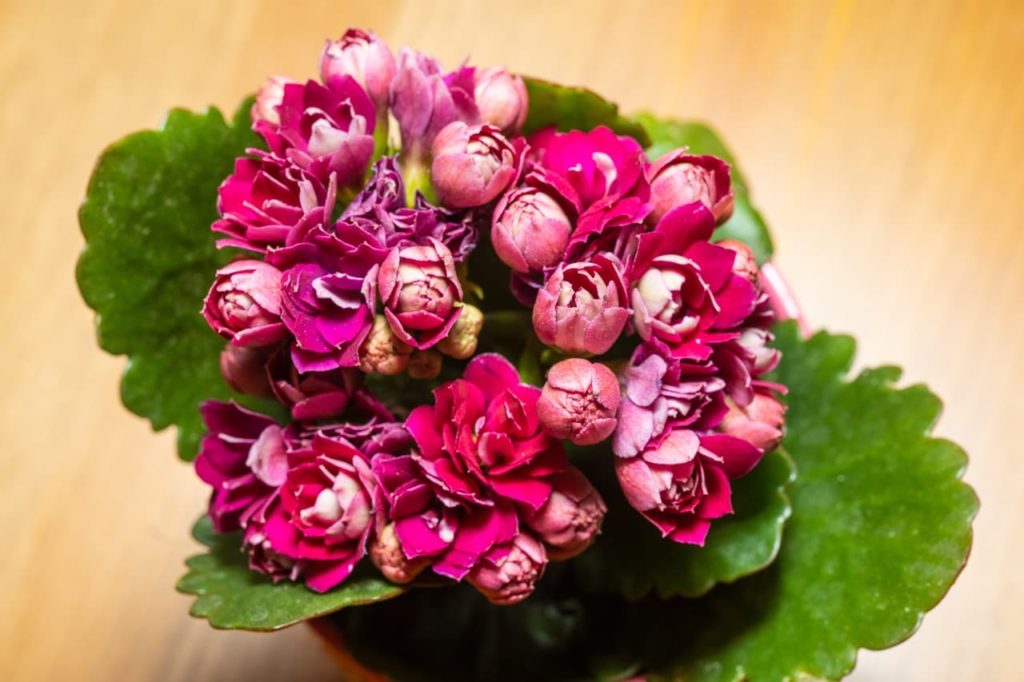
If all else fails, there are always grow lights, under which Kalanchoes do very well.
If you take this route, we have a hot tip for you in the final section.
Finally, do not suddenly move the plant from a dark or low-light spot to a sunlit spot.
Make the adjustment gradually, similar to the process of hardening.
Say Goodbye To Legginess!
The remedial course of action spelt out above will bush-ify your leggy Kalanchoe in good time.
To summarise, only a few hours of early morning direct sunlight, ample indirect sunlight, non-directed diffused lighting and protection from the afternoon sun or harsh sunlight will work wonders for Kalanchoes.
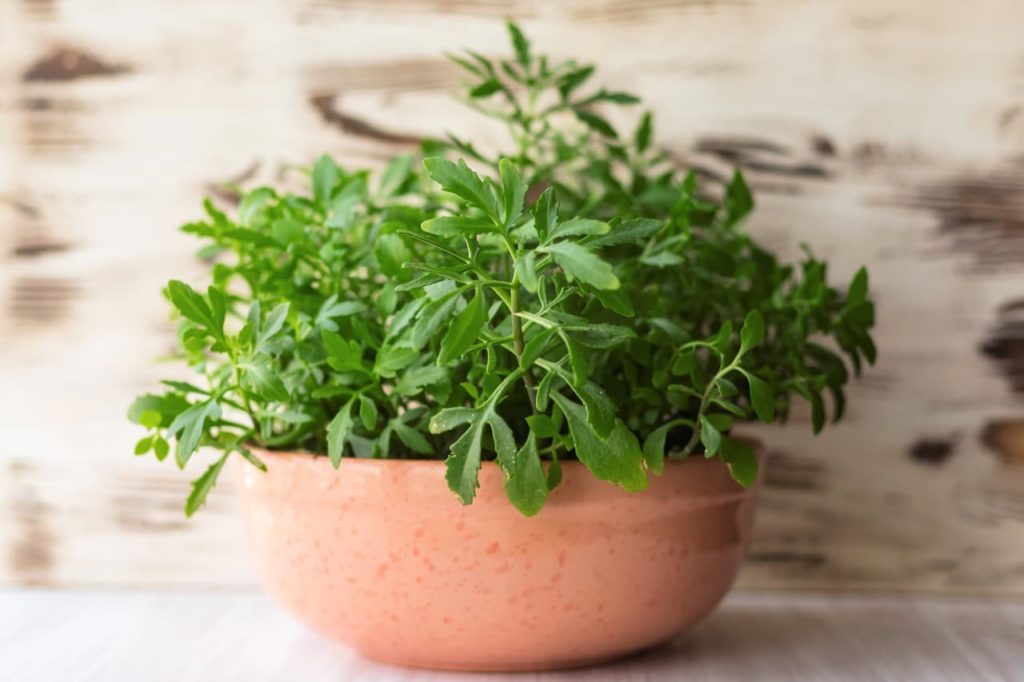
Here’s a final tip.
I had this problem with my trailing Crassulas and thought up an easy preventive: simply rotate the pot (in the same direction) by a quarter circle once or twice a week or do so every time you water the plant.
This way, even if there is a single strong source of light, the ill effects will be reduced or ameliorated.
“Even with good light levels, these plants will eventually become leggy, so I tend to prune them – following the advice above – twice a year,” explains Peter Lickorish, a Horticultural Consultant.
“For mine, I do this after the spring flowering, with a harder prune in late spring. I then do a light prune again in late summer, after any re-flowering over the summer.”
References
- 1Petruzzello, M. (1999, May 4). Kalanchoe | Description, Major Species, & Facts. Encyclopedia Britannica. Retrieved March 29, 2023, from https://www.britannica.com/plant/kalanchoe
- 2Kalanchoe: An Overview. (n.d.). Science Direct; Elsevier BV. https://doi.org/10.1016/b978-0-12-437651-9.50022-1

